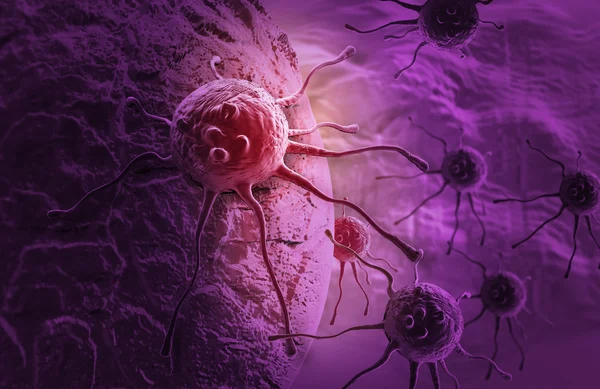
Neuroendocrine tumors (NETs) are rare cancers that originate from neuroendocrine cells, which share characteristics with both nerve and hormone-producing cells. These tumors can appear throughout the body. The most commonly affected organs being the lungs, appendix, small intestine, rectum, and pancreas. NETs vary widely in their growth rates and hormone secretion abilities.
Functional and Nonfunctional Tumor Likelihoods and Symptoms
Functional vs. Nonfunctional Tumors: Functional NETs produce excess hormones, leading to specific symptoms, while nonfunctional NETs might not release hormones or they won’t produce enough hormones to cause symptoms.
Diagnosis and appropriate treatment of NETs depend on the tumor type, location, hormone activity, rate of growth, and whether it has metastasized.
Types of Neuroendocrine Tumors
- Adrenal Cancer: A rare tumor that forms in the adrenal glands, which are responsible for hormone production and regulation of bodily functions like metabolism and stress response.
- Carcinoid Tumors: Slow-growing tumors typically found in the digestive tract or lungs. They often secrete hormones that cause symptoms such as flushing or diarrhea.
- Merkel Cell Carcinoma: An aggressive skin cancer originating in neuroendocrine cells found near nerve endings. They tend to appear as a fast-growing, painless lump on the skin.
- Pancreatic Neuroendocrine Tumors: Tumors that develop in the hormone-producing cells of the pancreas, which may be functional or nonfunctional.
- Paraganglioma: Rare tumors that originate in nerve tissues outside the adrenal glands and may release hormones. Paraganglioma can affect blood pressure and other bodily functions.
- Pheochromocytoma: A tumor that forms in the adrenal gland’s medulla. Like Paraganglioma, it can cause high blood pressure due to excess hormone secretion.
Symptoms of Neuroendocrine Tumors
Symptoms can vary based on the tumor’s location and hormone activity.
General Symptoms:
- Pain from a growing tumor
- Detectable lumps under the skin either visually or through touch
- Fatigue
- Unintentional weight loss
Symptoms from Functional Tumors:
- Skin flushing
- Diarrhea
- Increased thirst and urination
- Dizziness
- Shakiness
- Skin rash
You should consult a healthcare professional if you experience any of the persistent or concerning symptoms listed above.
Causes
The precise cause of neuroendocrine tumors is not well understood. They manifest when neuroendocrine cells undergo DNA mutations. These mutations prompt rapid cell multiplication and tumor formation. Some NETs grow slowly, while others are aggressive, invading nearby tissues or metastasizing to other parts of the body.
Risk Factors
Certain inherited genetic syndromes increase the risk of developing NETs, including:
- Multiple Endocrine Neoplasia, Type 1 (MEN 1)
- Multiple Endocrine Neoplasia, Type 2 (MEN 2)
- Von Hippel-Lindau Disease
- Tuberous Sclerosis
- Neurofibromatosis
Awareness and genetic screening for these risk factors are crucial for the early detection and effective management of neuroendocrine tumors. If you have a family history of genetic syndromes associated with NETs, consult a healthcare provider for genetic counseling and screening.




